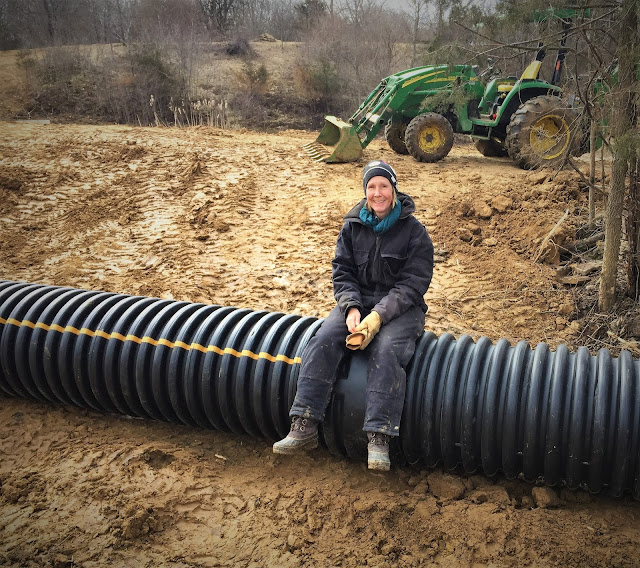Over the past several years I have been accumulating a lot of bee's wax. Every time one enters the hive there is burr comb which is scraped away and saved. And every time we harvest honey, the cappings on the honeycomb must be removed before we can extract the honey. This leaves us with quite a bit of wax. Over the summer months I used my solar wax melter to render the wax.... a slow and tedious process which required three renderings for each load and resulted in small quantities. By the time summer ended, I still had a huge tub of wax left. I stored the wax in the basement. But it was time to do something with it. I needed to clean out the clutter in the basement so that I could set up my spring shelves for plant starts.
I found some net screen material we got at an auction and cut a piece big enough to tuck under the edges of the Nesco cooker. I placed about an inch and a half of water in the pan and then set the pan in the cooker. I piled the comb on the net and covered it. After setting the temperature to 220 degrees F., I worked around the house doing other things and left the wax to melt and drip through the netting. And in less than 20 minutes I could smell the honey trapped in the wax. It was a yummy sweet smell just like one experiences when opening the hive in the heat of summer.
The tub in which I was taking the wax was brimming full even after filling the cooker. But I was able to place more and more wax on the screen as the wax melted. It dripped through the screen and floated on top of the water. A couple of hours later this entire tub full of wax was rendered through the screen.
The screen caught almost all of the debris, propolis, and detritus. When the wax cooled it became solid and slipped right out of the cooker. We have one final rendering to do in order to get the last of the debris and stuff out of the wax. Perhaps this coming weekend?
.
There was no time to render wax this weekend. Because, once again we were moving fill dirt from our "basement" to our new east driveway.
Gary started the day with completing the last of the digging of the borders of the new house. All that was between where the backhoe dug would be moved.
As usual, Gary and I would scoop up the dirt, load the truck and drive across the field to the new driveway.
Depending on where we wanted to fill, I would back the truck up and dump the load while Gary would "place" it. Here we are working on the last S curve towards the road.
Before we can make it to the road though we had to insert... yes, one more time.... another culvert. Here, the County road folks suggested that we place a 24 inch diameter culvert. Our driveway would be super wide so we made sure that the length was sufficient. The culverts were delivered by our local Menards truck - the first "big" truck to drive on our new driveway!
We had a little preparation left to do before placing the culverts.
Once connected and placed we went back to filling the truck and covering the culvert. You can see there is a lot of fill needed.
Thirty two degrees but we were toasty warm in our nice black insulated coveralls.
After about 20 loads or so the Gator made the first attempt (as always) across the culvert. Yeah!!!
The rest of the weekend we simply dug from the basement, filled the truck, and dumped load after load after load of fill. We eventually dumped 52 truckloads last weekend and now we can drive the truck all the way to the road (although it is quite bumpy and still needs another thirty or so loads to be wide and high enough).
Sunday evening brought clouds, cold, and yes, snow. It's lovely. Our hope is that it will melt this week; the soil will dry and we can again go back to making the driveway. Time will tell. If not, there is plenty to do on the farm!
Today's Journey Joys: bright sunshine, full moons, and sparkling planets, birthday girl's 16th, tomato sprouts, upcoming television spots with chickens, dreams of warm weather and growing greens.
















